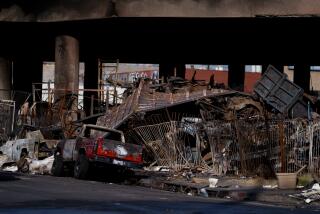Detecting Asbestos in Ceiling Is Specialist’s Job
QUESTION: Before purchasing our house, we hired a home inspector, explaining to him that we were planning to renovate the interior. After moving in, our remodel came to a screeching halt when the contractor discovered asbestos in the textured ceilings. Removal of the material is estimated to cost nearly $5,000.
We checked our inspection report, and not one word was mentioned about asbestos. The inspector claims that asbestos conditions are not included in a home inspection.
According to our contractor, acoustic ceilings are commonly known to contain asbestos, and this should have been pointed out by the inspector. Who should we believe?
Is it the responsibility of home inspectors to disclose the presence of asbestos?
ANSWER: Some home inspectors perform their work according to minimum standards, in which case asbestos disclosure would not be required.
Other inspectors regard themselves as the hired advocates of their clientsand make every effort to provide any information that would be in the client’s best interests.
As a general rule, home inspectors do not include asbestos information in their reports, and most inspection contracts disclaim responsibility for environmental hazards of any kind. Additionally, all of the state and national inspector associations categorically exclude asbestos inspection from their professional standards of practice. Therefore, your inspector may be technically off the hook.
To legally include asbestos as part of a home inspection, an inspector must be certified under the Asbestos Removal Emergency Response Act, and few home inspectors have this qualification.
For noncertified inspectors to make authoritative disclosures regarding asbestos is a violation of the law. This restriction is taken seriously by most inspectors.
The result is nondisclosure of typical asbestos conditions, even when the inspector may be fully aware of them.
For those inspectors who wish to inform their clients of possible asbestos conditions, without running afoul of the law, the solution is simple. Their reports can state the following: “Acoustic sprayed ceilings may contain asbestos. For more information, please contact an asbestos specialist.”
These two short sentences alert the client to potential problems without overstepping the inspector’s legal bounds. Best of all, they give priority to the client’s need for pertinent disclosure.
They’re Stuck With a Stucco Problem
Q: The home we just bought was recently renovated. Among the improvements was a new color coat on the stucco exterior. When we first viewed the property, we were assured that this new finish would last for many years.
But shortly after moving in, we noticed that the stucco is coming loose in places, revealing the old painted surface. When we tried picking at the exposed edges, the stucco peeled away quite easily. How could this be happening, and what can we do about it?
A: A stucco color coat, when correctly installed, should be expected to last for 20 years or more. Your problem is apparently the result of a money-saving shortcut in the stucco application.
Stucco adheres best when applied directly over cement-based materials. When stucco is installed over paint, adhesion is compromised, resulting in chipping and peeling. Adequate surface preparation should include the removal of old paint by means of sand blasting. Failure to sandblast is a sign of faulty workmanship.
Stucco over paint is a substandard condition that creates ongoing maintenance problems due to continued delamination. Periodic patching will be needed to maintain a presentable appearance, and disclosure to prospective buyers will be necessary when you sell the property.
The only permanent remedy is total removal of the new stucco.
Wiring Arrangement Is Asking for Trouble
Q: The ground fault interruptor (GFI) outlet in my garage is wired to the automatic door opener and the fire sprinkler alarm. If the GFI is tripped, the door and the fire alarm are both disabled. Do you think it’s safe to wire these fixtures to the GFI, or should we have the wiring changed?
A: The National Electric Code does not specifically forbid GFI protection for circuits that include garage door openers or fire alarms, but such installations are certainly impractical.
In the event of a fire, water from the sprinklers could cause the GFI to trip, rendering the alarm inoperative. Additionally, lack of power to the garage door opener could inhibit emergency escape by occupants of the building. My advice is to have these fixtures rewired.
(BEGIN TEXT OF INFOBOX / INFOGRAPHIC)
It’s Time to ‘Ask the Inspector’
Welcome to “Ask the Inspector,” a new, twice-monthly column that will answer your questions about the pre-purchase physical inspection of a home.
“Ask the Inspector” is written by Barry Stone, a home inspector for 11 years and the veteran of more than 5,000 inspections of homes, hotels, shopping centers and other buildings.
A former general contractor, Stone is a member of the California Real Estate Inspection Assn., the American Society of Home Inspectors and the International Conference of Building Officials.
Do You Have a Question?
Got a question about any aspect of the home inspection? Send it to Barry Stone, Los Angeles Times, 540 Atascadero Road, Morro Bay, CA 93442.
Queries can also be sent via e-mail to: inspector@fix.net
All questions will be considered for use in “Ask the Inspector” but cannot be answered individually.
More to Read
Sign up for Essential California
The most important California stories and recommendations in your inbox every morning.
You may occasionally receive promotional content from the Los Angeles Times.










